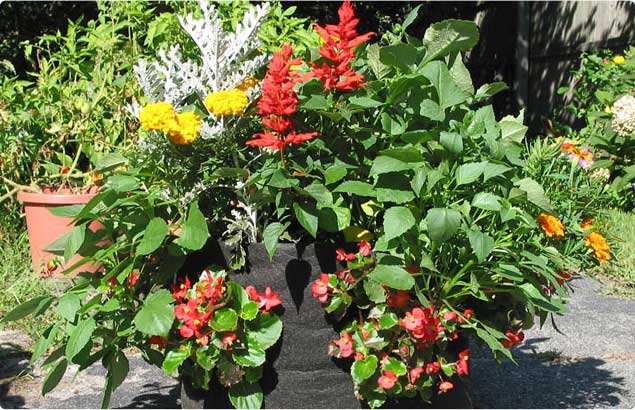The 5 Best Bulbs to Plant in Spring for Summer Blooms
While spring-blooming daffodils, tulips, hyacinths, and other fall-planted bulbs are great additions to any garden, summer-blooming bulbs also deserve a featured spot in the landscape. Planted in the spring, these summer beauties require very little maintenance and can be tucked right into existing garden beds. Planting spring bulbs means a lush garden, filled with fragrance and color all summer long.
When to plant spring bulbs
Summer-blooming bulbs are most often planted in the spring, as soon as the danger of frost has passed. Though the five bulbs featured below are winter-hardy down to USDA hardiness zone 5, planting them in the spring gives the bulbs plenty of time to get established before the next cold winter arrives. Plus, you’ll be planting them while the bulbs are still dormant and there are no stems or flower stalks that might accidentally be damaged during planting.
How to plant bulbs
Planting spring bulbs isn’t difficult, but there are some rules of green thumb you should follow when you plant bulbs.
- First, be sure to plant them at the proper depth. Most bulbs do best when planted two-and-a-half to three times deeper than they are tall. In other words, if the bulb itself is two inches tall, the base of the bulb should be about six inches deep after planting.
- Next, the majority of bulbs prefer well-drained soils. Do not plant bulbs in boggy areas where they’re prone to rot.
- And finally, bulbs grow best in soil amended with compost or other organic matter. Work a few shovels of compost into the area before planting spring bulbs.
5 bulbs to plant in spring
There are dozens of summer-flowering bulbs, but not all of them are winter-hardy. While dahlias, freesia, and calla lilies are beautiful plants, they won’t survive the winter in northern climates. But, these five exceptional favorites are both beautiful and winter-hardy.
- Oriental lilies: The large, fragrant blooms of Oriental lilies are total show-stoppers in the garden. With scores of varieties available, there’s a broad range of colors and heights to choose from. Space Oriental lily bulbs about a foot apart, and be sure to stake the stems as they grow; their blossoms are heavy, and they’ll need the extra support.
- Crocosmia: Just like gladiolus and crocus, this perennial plant technically grows from corms (storage organs similar to bulbs). Reaching about three feet in height, the sword-like foliage is bright green. In mid-summer, stalks of arching flowers extend above the leaves. Common flower colors are red, orange, and yellow, depending on the variety. Crocosmia prefers full sun, and hummingbirds are frequently found dining on its nectar.
- Asiatic Lilies: Asiatic lilies differ greatly from their Oriental cousins mentioned above. They are earlier blooming, fragrance-free, and brighter colored. Their flowers aren’t typically as large as Oriental lilies and their stems are sturdier, so they don’t require extra support.
- Chinese ground orchids (Bletilla): If you’re looking for a summer-blooming bulb that prefers the shade, the Chinese ground orchid is for you. Though it officially grows from a bulbous rhizome, this plant is generally categorized as a summer-blooming bulb. A terrestrial orchid, hardy down to USDA zone 5 with a layer of winter mulch, the Chinese ground orchid reaches a mere eighteen inches in height. The distinctive, Cattleya-like flowers come in white, purple, or lavender, and over time, the plants will spread and create a nice colony.
- Hardy Begonia (Begonia Grandis): With a layer of mulch, this hardy, shade-loving bulb can survive a very cold winter. The leaves of this begonia are shaped like a lopsided heart and are green on top and burgundy beneath. They’re topped in midsummer by masses of pink or white flowers. Though the hardy begonia is late to emerge in the spring, once it does, there’s no stopping it. This begonia naturalizes beautifully and reaches about two feet in height.
There’s no doubt that planting spring bulbs brings a blast of summer pizzazz to the landscape – something everyone can appreciate.







Tulips enjoy cool winters and need a chilling period to form flowers, which is why they thrive so well in Michigan. Within state hardiness zone 4 through 6, you can plant fall tulip bulbs from September to early November to allow cool temperatures to put them into dormancy before flowering begins in spring.
The ideal planting schedule for tulips is in the fall, about six weeks before the first frost. This length of time means your bulbs are less susceptible to damage from chipmunk pests and the rodents that eat them.
I just found tulip in my cold garage😤can I plant them now feb 1 I’m in Michigan but it has been a warm winter